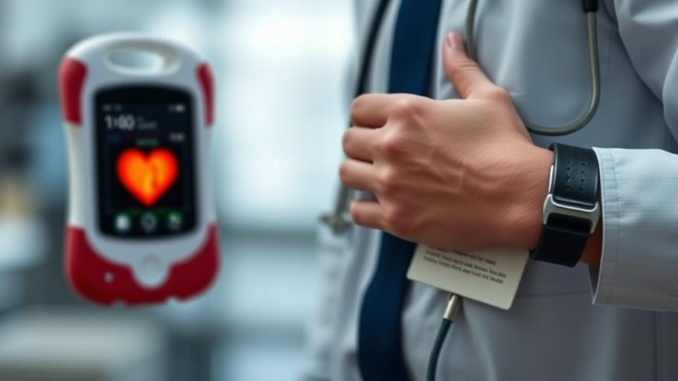
Summary
Kestra Medical Technologies, a wearable defibrillator maker, successfully launched its initial public offering, raising $202 million. The company significantly upsized its IPO, more than doubling its initial goal of $100 million, demonstrating investor confidence in its innovative technology and growth potential. This marks a significant milestone for the company and the wearable defibrillator market.
TrueNAS: the healthcare storage solution thats secure, scalable, and surprisingly affordable.
** Main Story**
Wow, Kestra Medical Technologies just made a splash! Their IPO was a huge success, raking in a cool $202 million. That’s a fantastic sign, not just for them, but for the entire wearable medical device sector. You know, it’s always exciting to see innovation get the recognition, and funding, it deserves.
Doubling Down on Expectations
Initially, Kestra was aiming for around $100 million, but get this – investor enthusiasm pushed them to more than double that! It’s a testament to the confidence people have in their wearable cardioverter defibrillator (WCD) tech. They priced almost 12 million shares at $17 each, and then when trading began under the ticker ‘KMTS’ on March 6, 2025, the stock opened at $22! Talk about a pop, right?
The Assure System: A Game Changer?
So, what’s all the hype about? Well, Kestra’s flagship product is the Assure WCD system. It’s not just another defibrillator; it autonomously detects ventricular arrhythmias and delivers life-saving therapy. Plus, it records other clinically significant arrhythmias, providing valuable data for doctors.
And here’s a detail I really appreciate: it’s designed with the specific needs of female cardiac patients in mind. How often do you see that kind of inclusivity in medical device design? That’s a smart move and, frankly, it’s about time.
Wearable Tech: The Future is Now
Kestra’s success comes at a perfect time, because the medtech IPO market’s heating up again. We’ve seen other notable IPOs recently, which suggests investors are feeling optimistic about innovation in this space. And the WCD market itself is projected to grow significantly, driven by the rise in cardiovascular diseases and, of course, the aging global population. Some experts are predicting a compound annual growth rate (CAGR) of around 9% through 2030.
I actually remember a conversation I had a while back with a cardiologist friend of mine. He was telling me how these wearable devices are becoming increasingly crucial for early intervention and preventative care. It’s pretty wild how far we’ve come.
Talking about the Assure system, its key features really do stand out. It has four-channel ECG, an advanced algorithm, and what they call ‘adaptive patient intelligence.’ All this minimizes noise and gives clear data and insights. The device doesn’t just deliver a shock and call it a day. It immediately alerts emergency medical services, making sure the patient gets the right care, right away.
Leadership and the Road Ahead
Of course, Kestra didn’t get here overnight. They secured funding through an oversubscribed round and strategically built their leadership team, bringing in experienced medtech folks like Raymond Cohen and Al Ford. You can’t underestimate the importance of strong leadership, especially when you’re navigating the complexities of the medical device market. You want to put the right people in place.
Looking ahead, I’m really curious to see how Kestra will leverage this IPO success. Will they expand their product line? Will they partner with other healthcare providers? One thing’s for sure: they’ve positioned themselves as a major player in the wearable cardiac care space. Personally, I’m excited to watch their journey, and I think you should be too.


Wearable defibrillators designed specifically for women? Finally! Does this mean future emergency room visits will involve fashion consultations to coordinate with medical devices? Asking for purely aesthetic research purposes, of course.
Haha! Love the idea of coordinating emergency room visits with wearable tech. Seriously though, it’s great to see devices tailored for women’s needs, and hopefully, that means better comfort and outcomes too. Maybe future versions *will* have customizable options! What color would you choose first?
Editor: MedTechNews.Uk
Thank you to our Sponsor Esdebe